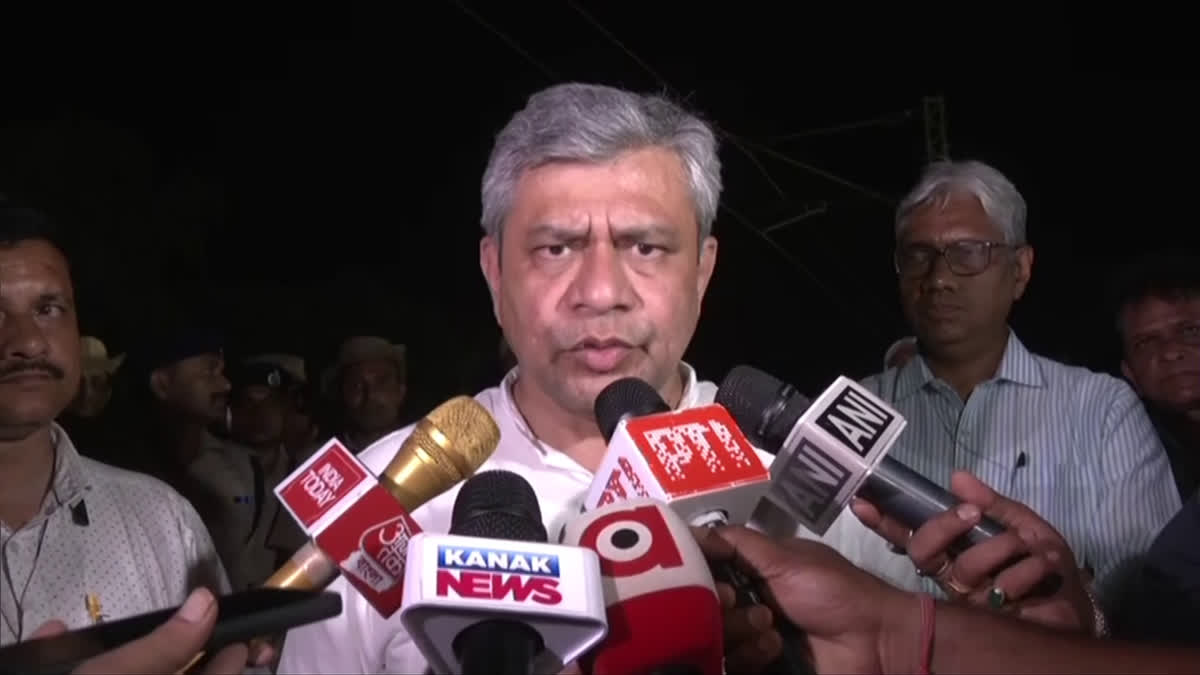Our responsibility not over yet: Railway Minister on restoration at Odisha train crash site Balasore (Odisha) : The railway services have been restored at Odisha's Balasore nearly 51 hours after the June 2 gruesome triple train accident left 277 dead and over a thousand injured. Union Railway Minister Ashwini Vaishnaw has said that his aim is to find the family members of the missing people as soon as possible.
Ashwini Vaishnaw said that their aim was to ensure that the family members of the missing persons should be reunited at the earliest. Vaishnaw asserted that their responsibility was not over yet and that the Railway Board has recommended a CBI inquiry into the devastating mishap. Train services at the accident spot resumed after repairing damaged tracks on both the Up and Down lines.
At the accident spot near Bahanagar Bazaar railway station in Balasore district, emotional scenes were witnessed as Union Railway Minister Ashwini Vaishnaw shook hands with the crew of a goods train and prayed for their safe journey.
Repair, reconstruction and testing of both lines
Speaking to ANI on Sunday, the Railway Minister said that the work of reconstruction of the damaged tracks had started soon after Prime Minister Narendra Modi sent instructions to this effect. Vaishnaw said that both the lines were reconstructed and tested before restarting the train service 51 hours after the train accident. Earlier, Vaishnav said that the accident happened due to a change in electronic interlocking.
The triple train accident involved Bengaluru-Howrah Superfast Express, Coromandel Express and goods train on three different tracks at Bahanaga Bazar station in Balasore district. Odisha Chief Secretary Pradeep Jena has clarified that the death toll in the horrific accident was revised from 288 to 275 after it was determined that some bodies were counted twice.
The ministry said that more than 1,000 workers were pressed into service for the restoration of the damaged tracks, along with more than 7 poclain machines. Two accident relief trains and 3-4 railway and road cranes were also deployed for the purpose.
